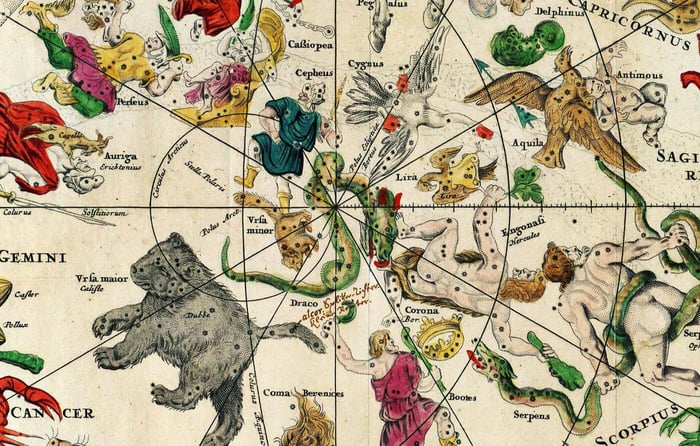Celestial Maps - Mapping the Stars: A Guide and History

The night sky has been a source of wonder and curiosity throughout human history. Celestial maps, which chart the stars, planets, and other astronomical phenomena, are not only tools for astronomers but also works of art and historical significance. This comprehensive guide delves into the world of star charts, tracing their history and exploring their modern-day relevance.

The Origins of Celestial Mapping
1.Ancient Civilizations : The practice of charting the night sky dates back to ancient civilizations. Babylonians, Egyptians, Greeks, and Chinese all made significant contributions to early astronomical mapping, using it for navigation, timekeeping, and religious purposes.
2.Medieval Islamic Astronomy : Islamic scholars made notable advancements in astronomy during the Middle Ages. Their detailed star charts significantly influenced later European developments in the field.

The Golden Age of Celestial Cartography
1.The Renaissance Era : With the Renaissance came a renewed interest in science and the natural world. Celestial charts became more accurate and artistic, with figures such as Andreas Cellarius and his famous star atlas ‘Harmonia Macrocosmica’.
2.The Age of Enlightenment : Astronomers like Johannes Hevelius and John Flamsteed produced detailed star atlases, combining scientific accuracy with artistic beauty.

The Art and Science of Celestial Maps
1.Symbolism and Artistry : Early star charts were not just scientific tools but also works of art. They often included elaborate illustrations of constellations as mythological figures, animals, and objects.
2.Technological Advancements : The invention of the telescope revolutionized celestial mapping, allowing for more detailed and accurate depictions of the night sky.

Modern Celestial Cartography
1.Digital Age : Today, celestial mapping has been transformed by digital technology. Online platforms and software allow for interactive exploration of the night sky, far beyond what is visible to the naked eye.
2.Educational Use : Modern star charts are valuable educational tools, helping students and enthusiasts alike to learn about astronomy and navigate the night sky.

Choosing and Collecting Celestial Maps
1.Historical Collectibles : Antique celestial maps are sought after by collectors for their historical and artistic value. They offer a glimpse into how our understanding of the universe has evolved over time.
2.Decorative Pieces : Reproductions of historical celestial maps can make stunning decorative pieces in homes or offices, adding a touch of elegance and wonder.
3.Practical Tools for Amateur Astronomers : Modern star charts are essential for amateur astronomers, guiding their observations of the night sky.
The journey of mapping the heavens is a fascinating intersection of science, art, and history. From guiding ancient sailors and inspiring Renaissance artists to aiding modern astronomers, these maps are a testament to humanity's enduring fascination with the cosmos. Whether for practical, educational, or decorative purposes, celestial maps continue to captivate and illuminate our understanding of the star-studded sky above us.
